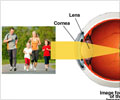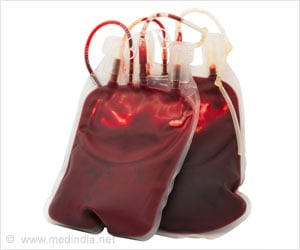According to researchers at the Southeastern Medical College at Dallas report that contact lenses, both rigid and soft, made from new hyper-oxygen
According to researchers at the Southeastern Medical College at Dallas report that contact lenses, both rigid and soft, made from new hyper-oxygen transmissible materials are expected to reduce the possibility of bacterial infection better than contact lenses which are available now. Based in part on these findings, the Food and Drug Administration (FDA) recently approved hyper-oxygen transmissible contact lenses for 30-day continuous wear.
The results of the Southeastern study are published in American Academy of Ophthalmology. Dr. H. Dwight Cavanag, senior author of the study and vice chairman of ophthalmology and associate dean for clinical services at Southeastern, said study results provide a firm biological foundation for increased prospective safety of the new silicone hydrogel lens materials.According to Cavanag and his study, the significance of out study is that for the first time we have a scientific-based rationale that has passed peer review at high levels that exactly predicts our current epidemiological risk pattern and strongly suggests that these new lenses will be the breakthrough in reducing risk for infection.
Cavanag said conventional contact lenses disturb the surface of the cornea, thereby allowing pathogenic bacteria, such as Pseudomonas aeruginosa, to bind to the corneal surface cells and potentially initiate infection.The most significant and devastating clinical complications among contact-lens wearers have been corneal ulcerationand infection, which can lead to permanent visual loss.
He said that this is the first randomised, prospective, masked clinical study with contact lenses that demonstrates significant difference in bacterial binding to the cornea as a function of the oxygen transmission of the lenses themselves. This means that there are really small amounts of increased bacterial binding seen with extended-wear, even up to 30 nights, with the novel contact-lens materials that transmit high amounts of oxygen to the eye as compared to presently available conventional materials.
Cavanagh said the study established three important findings. Initially, the hyper-oxygen transmissible soft-lenses produced significantly less bacterial binding than conventional lens with no significant difference between six-night and 30-night wear. Second, researchers noted for the first time a remarkable adaptive recovery after six months with all soft lenses, with a decrease in bacterial binding to the corneal surface. Lastly, 30-night wear produced no significant increases in bacteria binding after one year.
An unexpected finding of the study was that rigid contact lenses appear better for the eye than soft because they promote tear exchange, which washes out debris and allows more oxygen to reach the eye. For the past 20 years, ophthalmologists have warned the public against wearing contact lenses overnight because it could make them more susceptible to eye infections.
Advertisement











